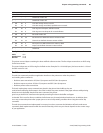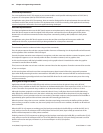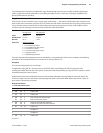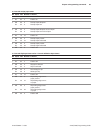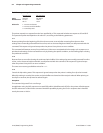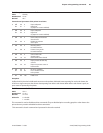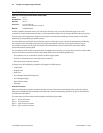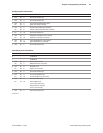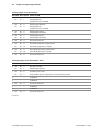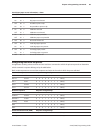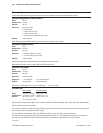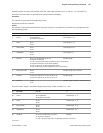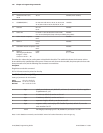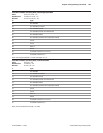
Chapter 5: Programming commands96
A776 (B780) Programming Guide A776-PG00001 C 12/09
Unsolicited status mode
Select or cancel unsolicited status mode (USM)
ASCII: GS a n
Hexadecimal: 1D 61 n
Decimal: 29 97 n
Value of n: 0 turns mode o;
any non-zero value turns mode on
Default: 0 (USM disabled)
Enables or disables automatic return of 4 status bytes whenever one or more of the listed changes occurs. This
command is a batch mode command; that is, it is processed after all prior data in the input buer has been processed.
There may be a time lag between the printer receiving this command and enabling unsolicited status mode (USM),
depending on the pending input buer contents.
If an immediate return of printer status is desired, then any of the other status commands should be issued following
this command. Once this mode is activated, the printer automatically transmits 4 status bytes whenever any of
the conditions change. If an RS-232C connection with hardware ow control is used, all four status bytes will be
transmitted without checking DSR.
This command is a POS version of general printer unsolicited status functions; it uses the same command code as older
versions of the POS command “automatic status back (ASB)” but has the following dierences:
• Theparametern is an on/o switch; it does not select trigger subset.
• Thereisnoimmediatereturnwhenthismodeisturnedon.
• All4statusbytesarealwaysreturned.
A change in any of the following conditions will trigger the USM response:
• CashDrawer
• ReceiptCover
• KnifeError
• Out-of-RangePrintheadTemperature
• Out-of-RangeVoltage
• PaperExhaustStatus
• SlipPaper
Related information
When Unsolicited Status Mode is enabled using this command, the status transmitted by other commands and the
USM status are dierentiated according to the information found in Recognizing Data from the printer, which follows
the USM return description.
The status bytes to be transmitted are described in the following four tables.
Byte 1 = printer information
Byte 2 = error information
Byte 3 = paper sensor information
Byte 4 = paper sensor information




